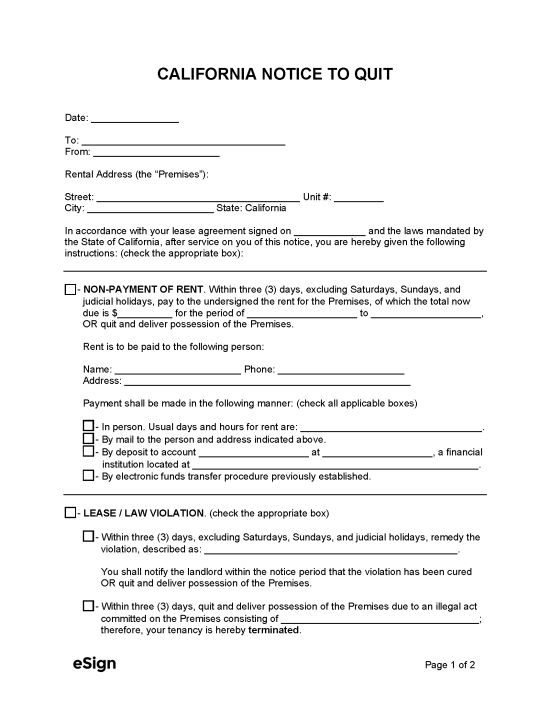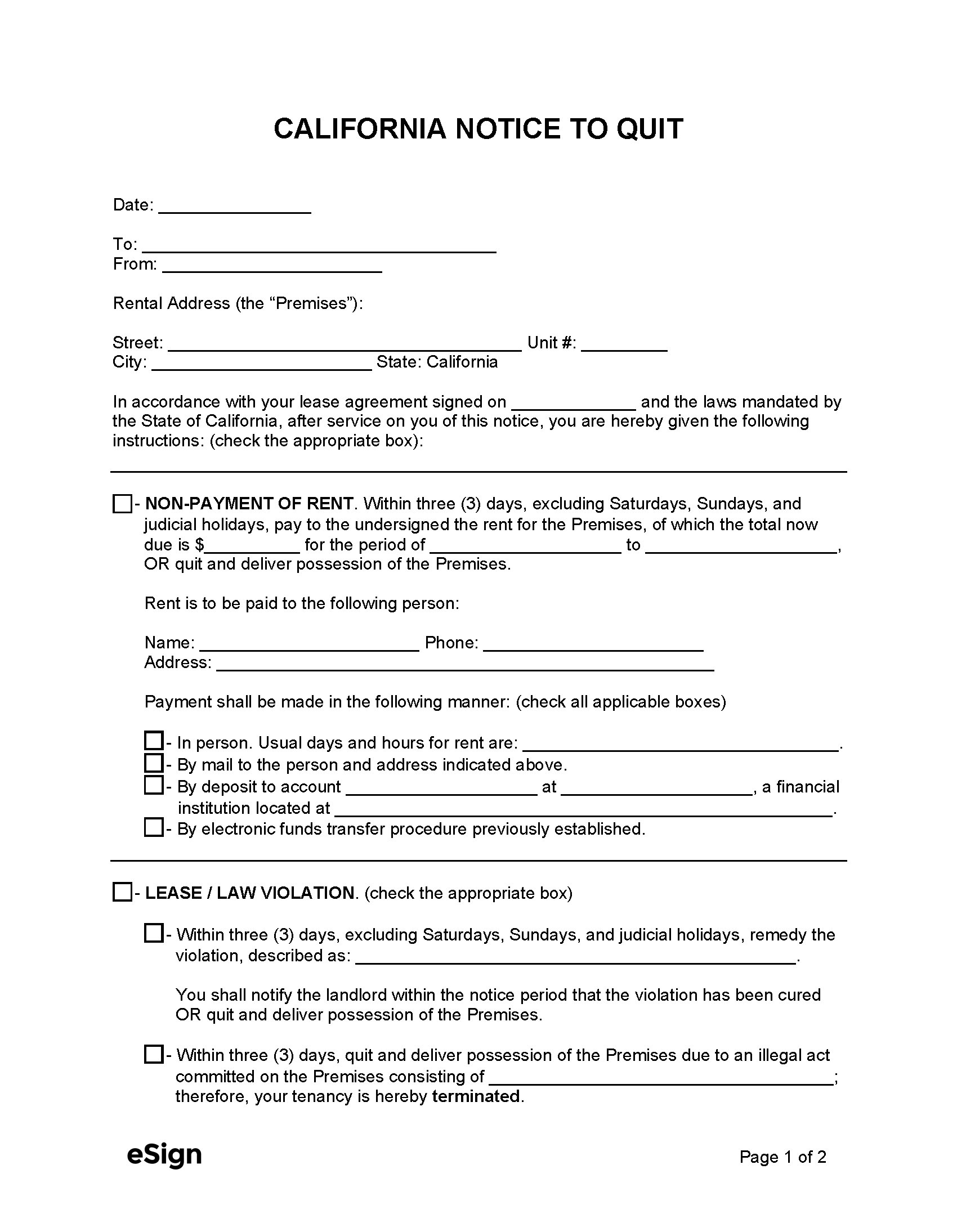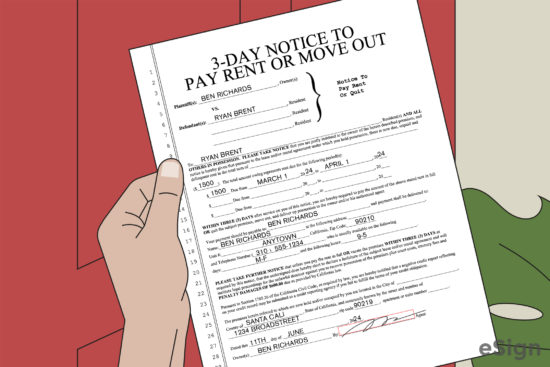Eviction Notices: By Type (6)
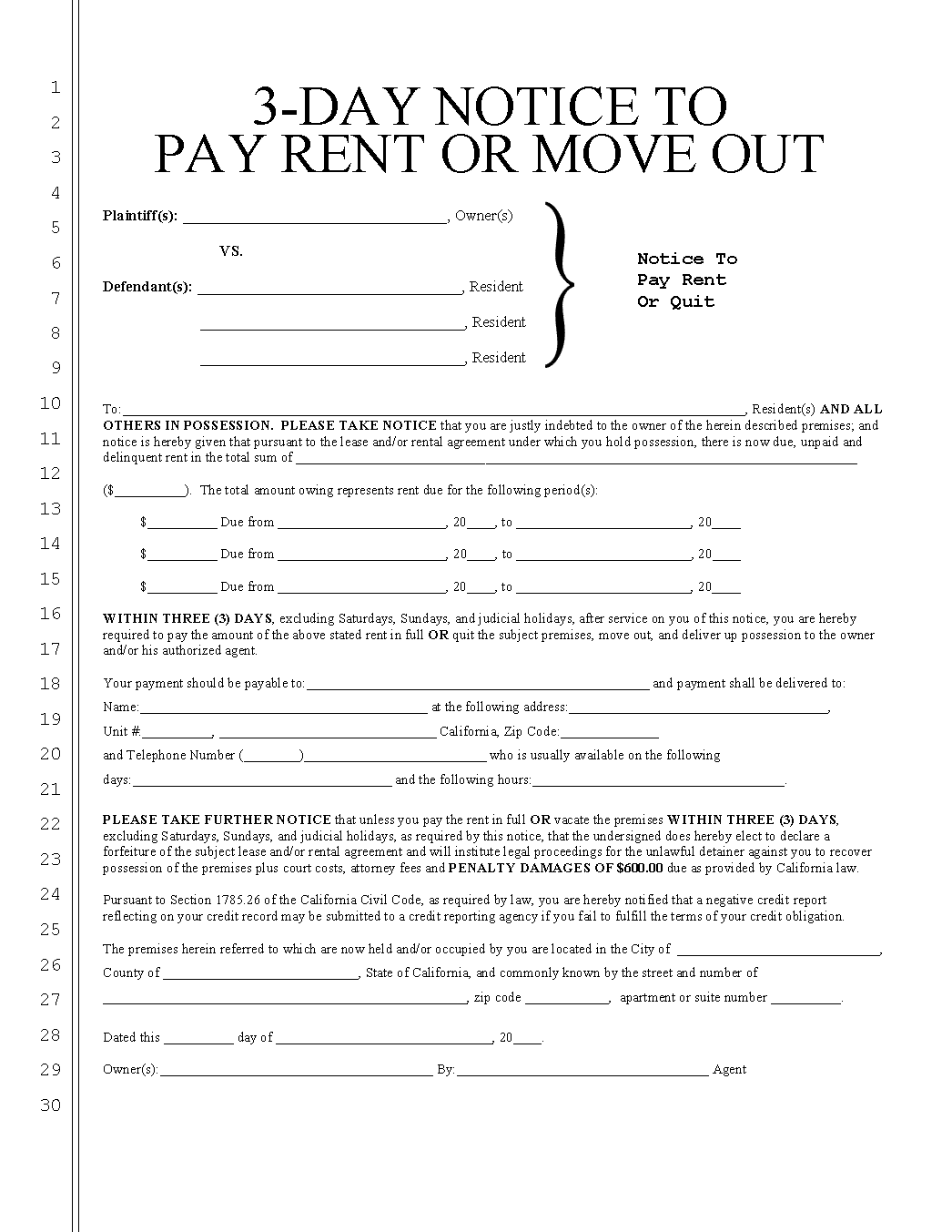
3-Day Notice to Quit | Non-Payment – Notifies a tenant that they are in violation of their lease due to non-payment of rent.
Download: PDF
|
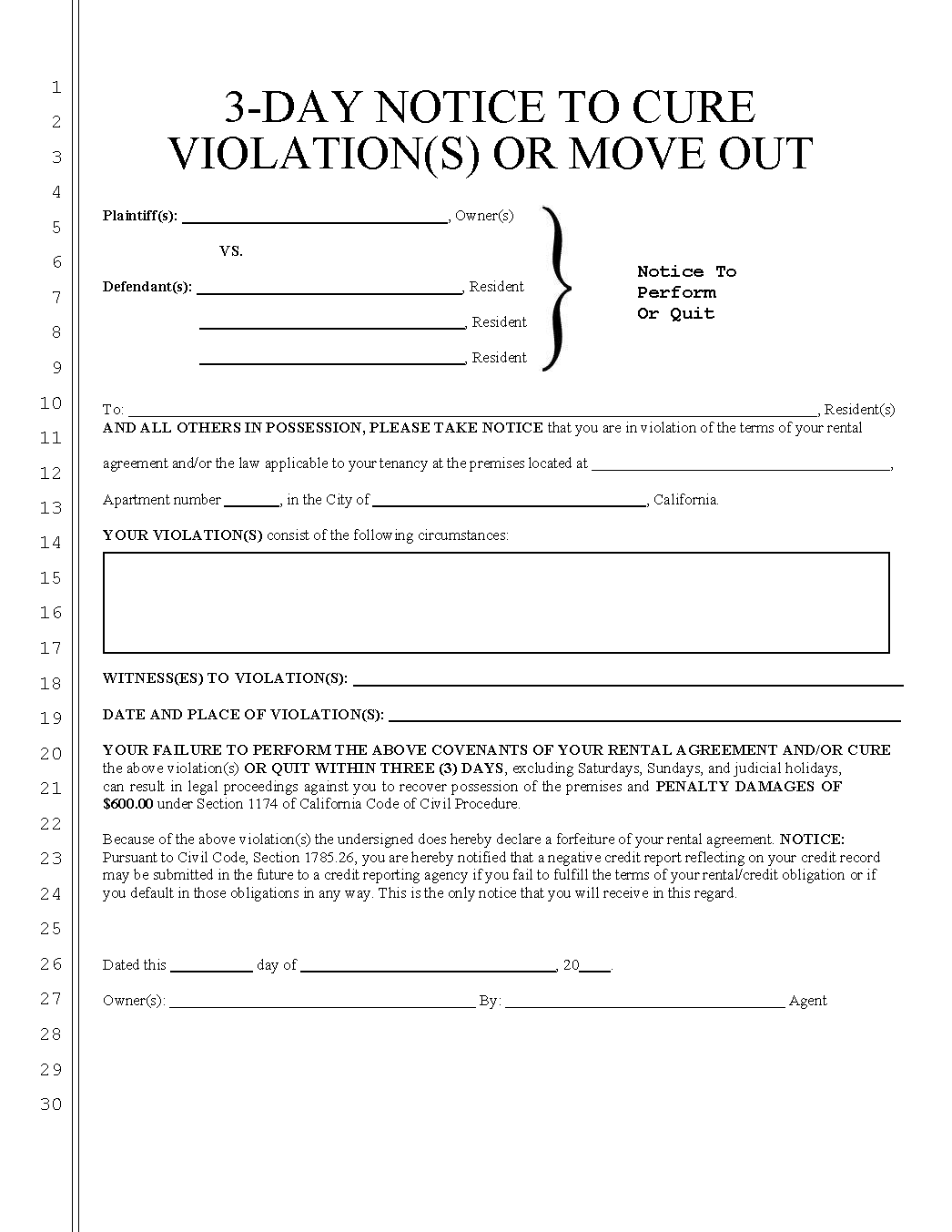 3-Day Notice to Quit | Non-Compliance (Curable) – Gives three days to fix a lease violation or leave. 3-Day Notice to Quit | Non-Compliance (Curable) – Gives three days to fix a lease violation or leave.
Download: PDF |
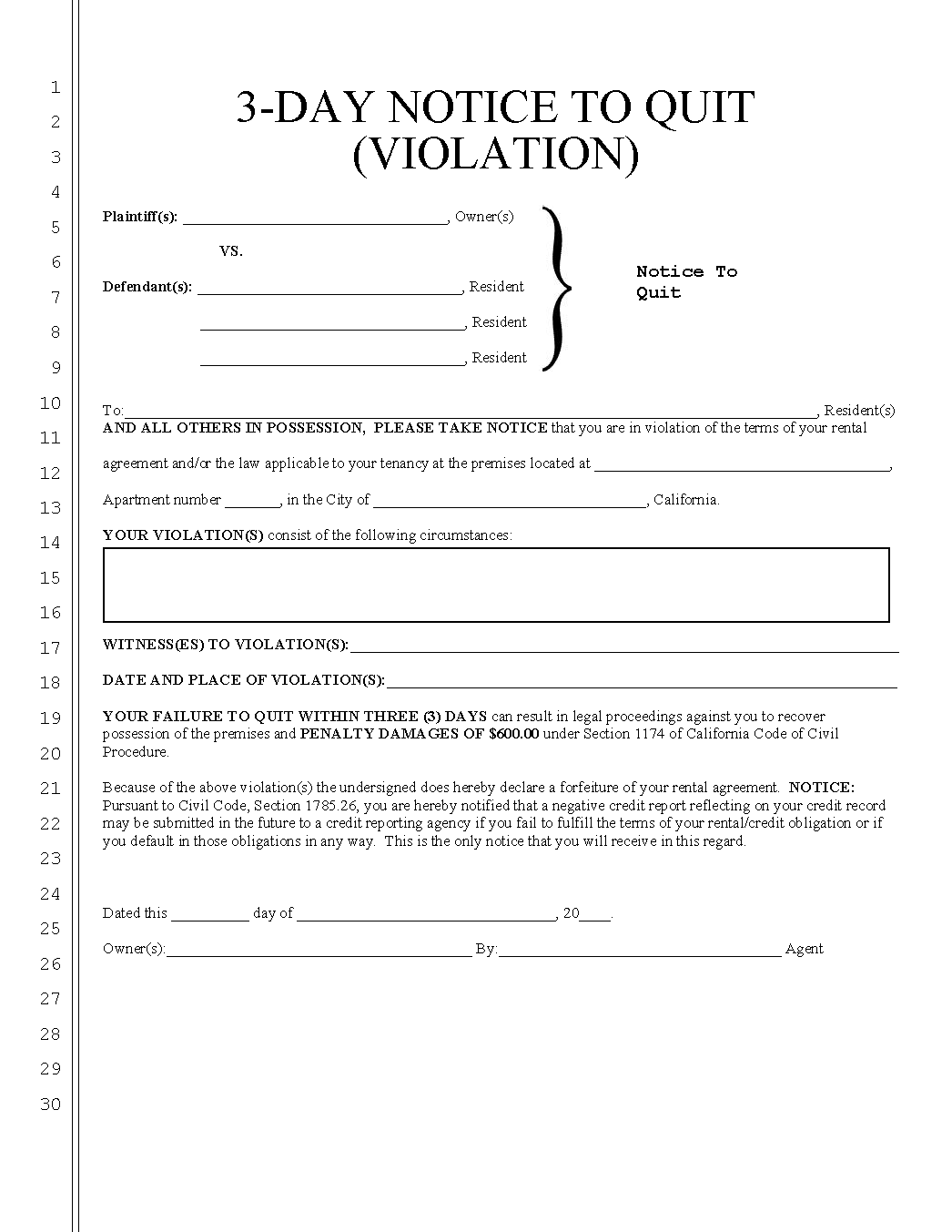 3-Day Notice to Quit | Non-Compliance (Incurable) – Notifies a tenant that their lease is terminated due to a breach of lease or unlawful behavior. 3-Day Notice to Quit | Non-Compliance (Incurable) – Notifies a tenant that their lease is terminated due to a breach of lease or unlawful behavior.
Download: PDF |
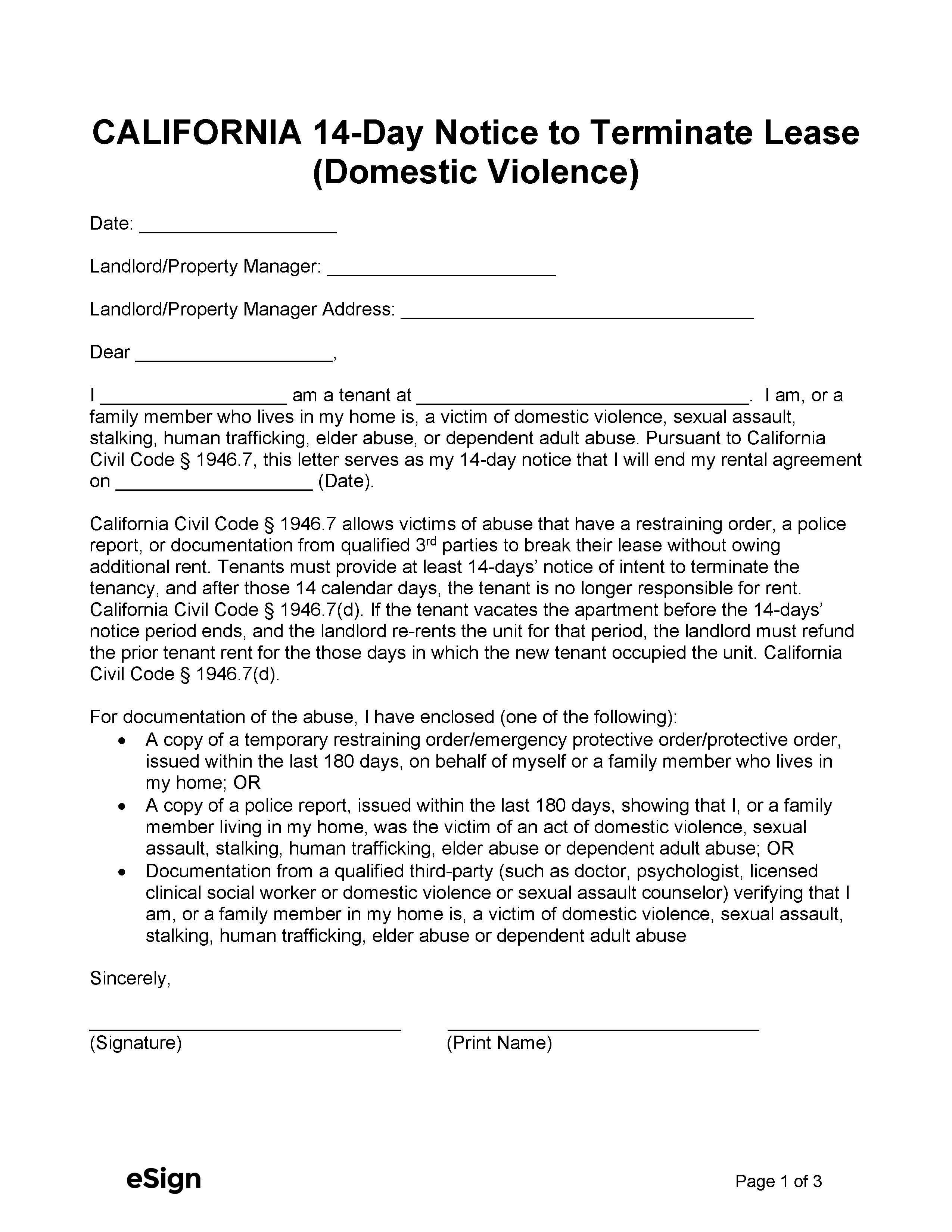
14-Day Notice to Terminate | Domestic Violence – Permits a tenant to terminate their lease due to domestic violence towards them or a member of their household.
Download: PDF |
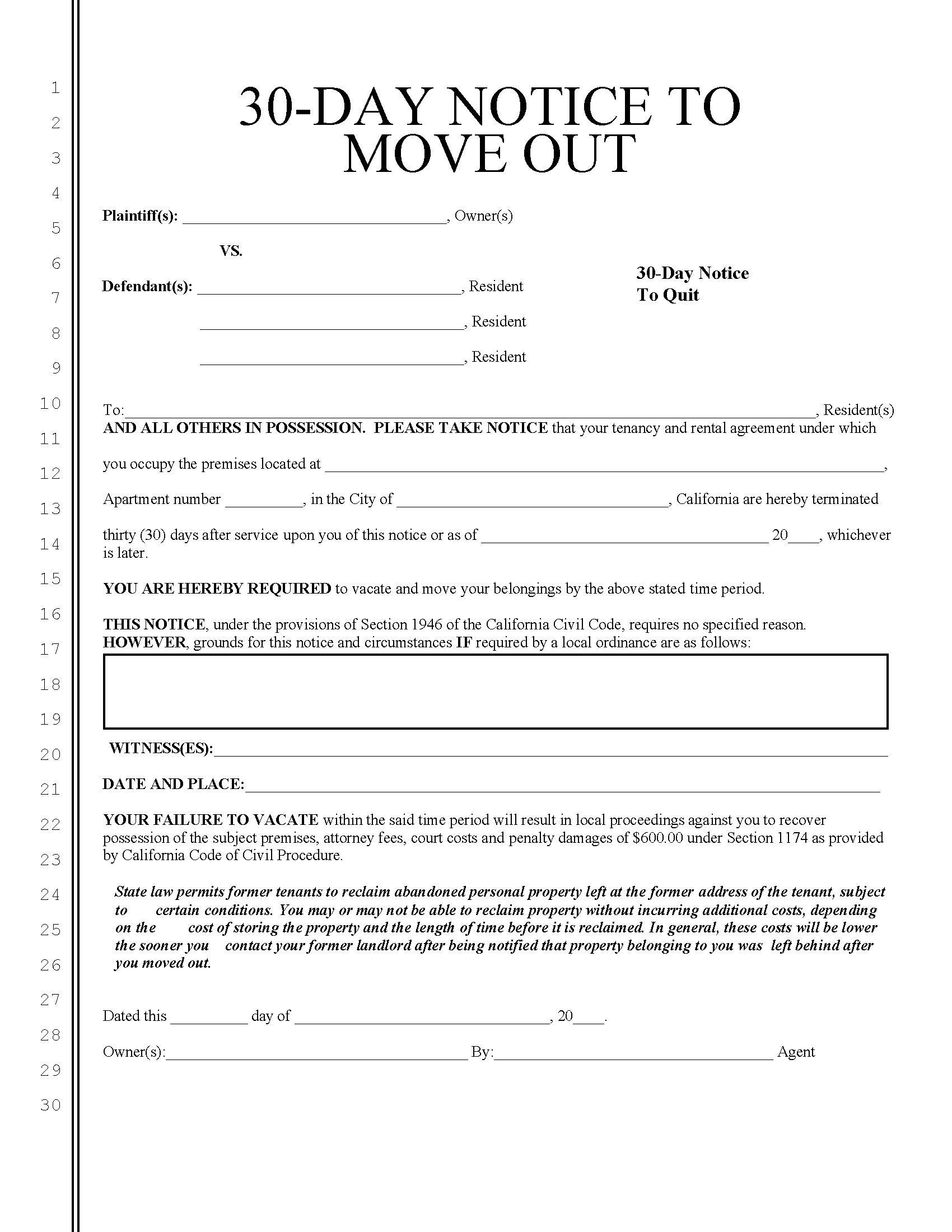 30-Day Notice to Terminate | Month-to-Month Lease (Under 1 Year) – Used by the landlord or tenant to end a month-to-month lease of one year or less. 30-Day Notice to Terminate | Month-to-Month Lease (Under 1 Year) – Used by the landlord or tenant to end a month-to-month lease of one year or less.
Download: PDF |
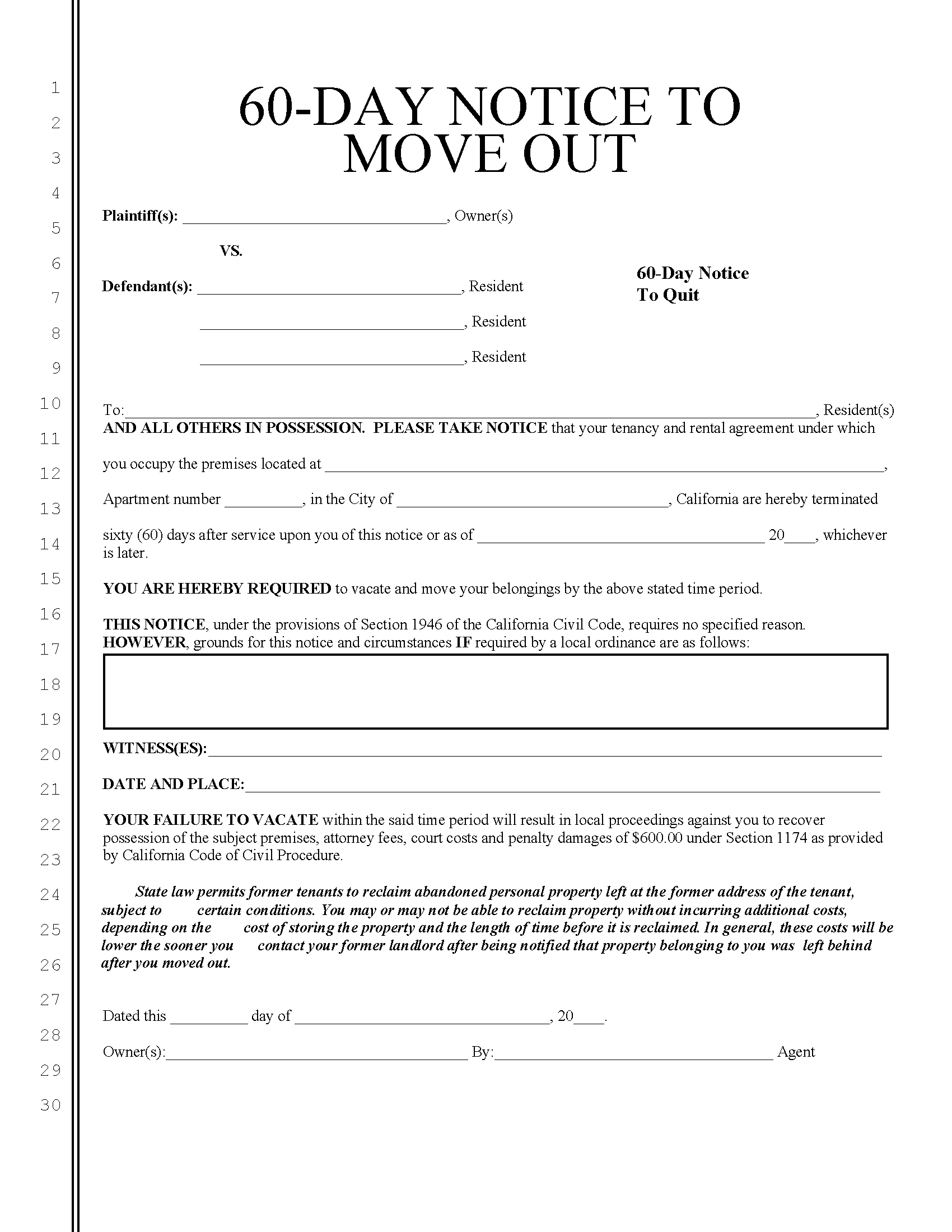 60-Day Notice to Terminate | Month-to-Month Lease (Over 1 Year) – Terminates an at-will lease agreement between a landlord and tenant that has been effective for one year or longer. 60-Day Notice to Terminate | Month-to-Month Lease (Over 1 Year) – Terminates an at-will lease agreement between a landlord and tenant that has been effective for one year or longer.
Download: PDF |
Notice Requirements
How to Evict a Tenant in California
Step 1 – Deliver Notice
Before a tenant can be evicted, the landlord must hand-deliver, mail, or post on the premises one of the below notices to notify them that they are in violation of their lease. The tenant may or may not have the option to remedy the issue.
Step 2 – Start Eviction Process
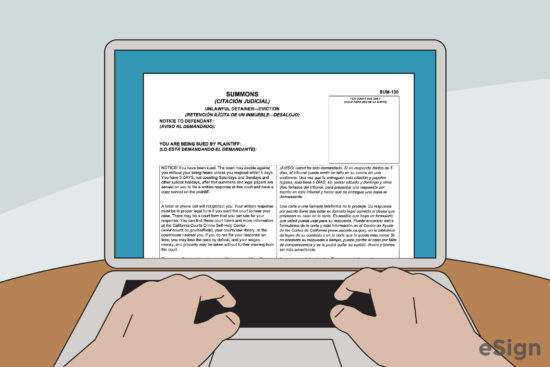
Step 3 – File with County Court
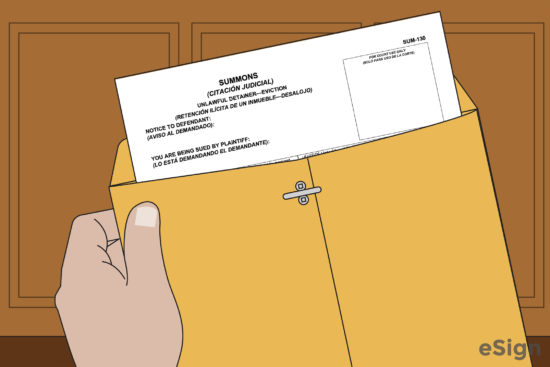
Step 4 – Serve Tenant
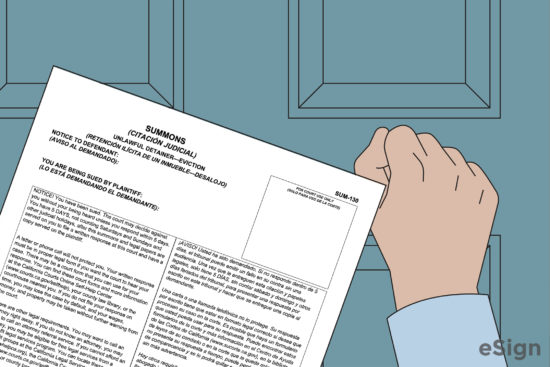
The landlord must arrange for a third party to serve the abovementioned documents in the following order:
- Hand-delivered to the tenant
- Hand-delivered to a member of the tenant’s household AND mailed to the tenant’s address
- Post copies on the property AND send copies by certified mail
The server must complete and sign a Proof of Service of Summons (Form POS-010). This form must be filed with the court clerk and a stamped copy will be returned to the landlord.
Step 5 – Tenant’s Response

Step 6 – Default Judgment (If Applicable)
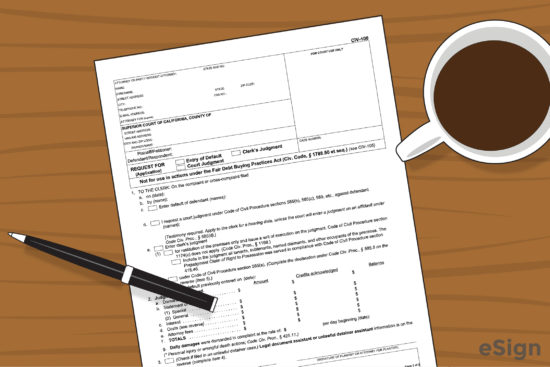
Step 7 – Trial (If Applicable)
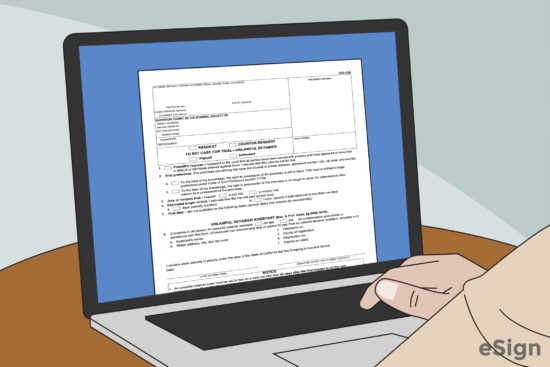
If the tenant responds to the landlord’s Complaint, the landlord must file a Request to Set Case for Trial – Unlawful Detainer (Form UD-150). The parties may agree to a jury trial (with associated jury fees) or a judge will be assigned to settle the case.
Both parties will be given the opportunity to plead their case during the trial, with the judge asking questions and reviewing any necessary evidence.
Step 8 – Judgment

If the tenant wins, they will be able to stay on the property, and the landlord may be required to pay their legal and court fees.
If the landlord wins the case, the landlord must complete a Judgment – Unlawful Detainer (Form UD-110) and a Writ of Execution (or Possession) (Form EJ-130) (if not completed already) and file it with the court clerk for the judge’s signature.
The tenant may be asked to pay any unpaid rent, damages, penalties, and court costs to the landlord. The sheriff will give the tenant five days to vacate the premises before they are forcibly removed and locked out.
Court Forms + Resources
Forms
- Summons (Form SUM-130)
- Signed by: Court Clerk
- Complaint (Form UD-100)
- Signed by: Landlord or Attorney
- Plaintiff’s Mandatory Cover Sheet (Form UD-101)
- Signed by: Landlord or Attorney
- Civil Case Cover Sheet (Form CM-010)
- Signed by: Landlord or Attorney
- Proof of Service of Summons (Form POS-010)
- Signed by: Process Server’s Signature
- Request for Entry of Default (Form CIV-100)
- Signed by: Landlord or Attorney
- Judgment – Unlawful Detainer (Form UD-110)
- Signed by: Judicial Officer or Clerk Signature
- Writ of Execution (or Possession) (Form EJ-130)
- Signed by: Court Clerk
- Answer – Unlawful Detainer (Form UD-105)
- Signed by: Tenant or Attorney
- Request to Set Case for Trial – Unlawful Detainer (Form UD-150)
- Signed by: Landlord or Attorney and Process Server
Resources
